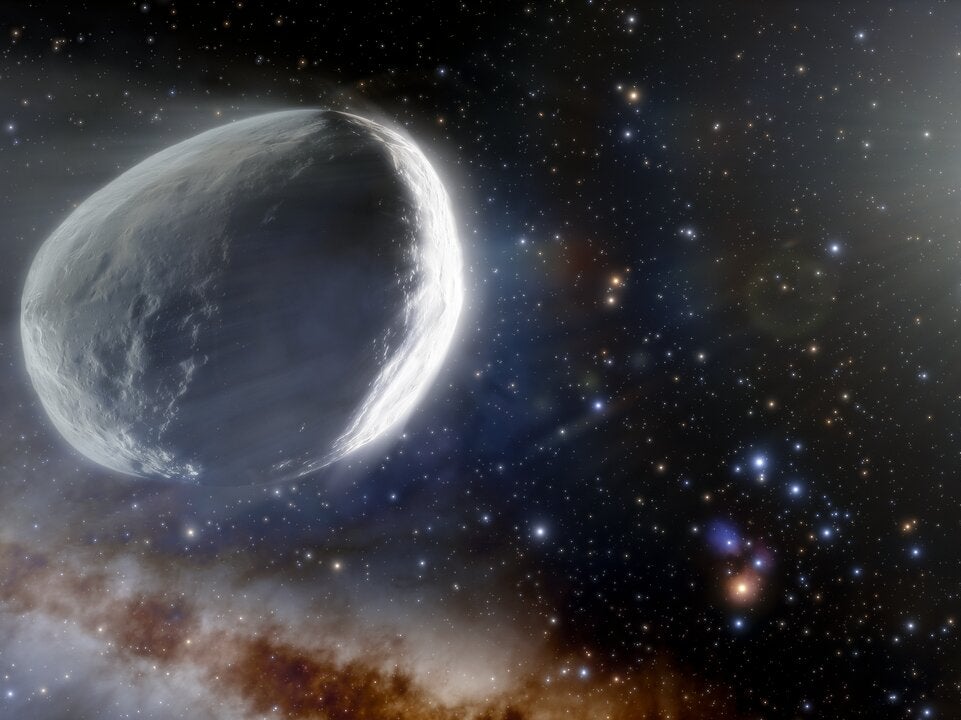Bernardinelli-Bernstein explained: Everything you need to know about the largest comet ever discovered
The largest comet ever discovered will reach closest to us in a decade, but we might not even notice it

The largest comet ever discovered is rapidly heading towards The Sun from the edges of our solar system.
Comet Bernardinelli-Bernstein is 1000 times larger than its usual brethren, and is estimated to be between 100 and 200 kilometres across.
The rare phenomenon will come in a strange orbit, flying inwards from the distant Oort Cloud over millions of years.
What is the Oort Cloud?
The Oort Cloud is the most distant region of the solar system, believed to be a spherical shell of icy pieces of space debris that are the size of mountains.
It’s possible the cloud could contain billions, or even trillions, of objects, Nasa believes, but is so distant it’s hard to be sure. The Oort Cloud is thought to be between 2,000 and 5,000 AU (astronomical units) from the Sun, but the outer edge might be 10,000 or even 100,000 AU from the Sun. Pluto, in contrast, is only 30 AU from the Sun. (One AU is the distance between us and the Sun.)
How close will Bernardinelli-Bernstein get to us?
While the comet is directly coming from one side of the solar system towards our Sun, it will still remain far enough away that we will have trouble even seeing it.
The comet’s orbit is perpendicular to the plane of the Solar System, and when it reaches its closest point to the Sun – the perihelion - it will be around 11 AU away. This is a little more than Saturn’s distance from the Sun, a journey it hasn’t made for the least three million years.
How was the comet found?
Pedro Bernardinelli and Gary Bernstein, of the University of Pennsylvania, found the comet using the the 570-megapixel Dark Energy Camera (DECam) from the Víctor M. Blanco Telescope at the Cerro Tololo Inter-American Observatory (CTIO) in Chile.
The two men used 15-20 million CPU hours at the National Center for Supercomputing Applications and Fermilab, running the algorithms necessary to identify over 800 trans-Neptunian objects (those that exist in our solar system further out than Neptune). Thirty two of those 800 detections belonged to one object: comet Bernardinelli-Bernstein.
Can we send a spacecraft to it?
This question was answered by the European Space Agency’s Comet Interceptor Twitter account, which was launched in 2019 with the aim of meeting a comet approaching Earth’s orbit.
When will the comet be visible?
From the Earth, it won’t – at least, not with the naked eye. Despite its size and proximity to our closest star, amateur astronomers will only be able to see it with a large telescope, even at its brightest.
Even then it will be a ten-year wait until 2031 - when it reaches the perihelion - that it will be most visible, before making its long trek back to the furthest edge of the solar system.
Join our commenting forum
Join thought-provoking conversations, follow other Independent readers and see their replies
Comments